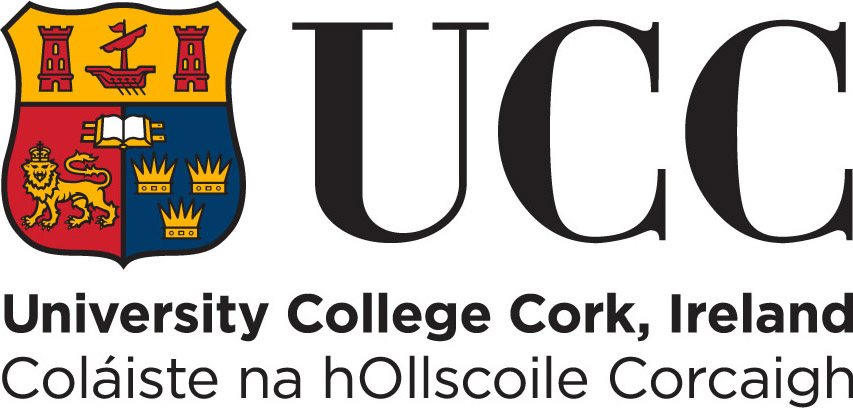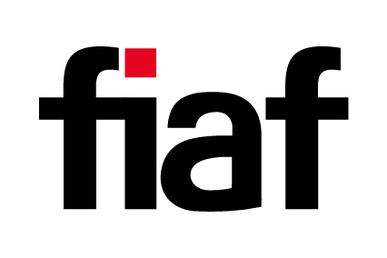Tigritudes: A Subjective Anthology of Pan-African Cinema to Decolonise the Gaze. An Interview with Dyana Gaye
Estrella Sendra
[PDF]
Abstract
In this interview, Dyana Gaye shares insights on Tigritudes, an itinerant subjective anthology of Pan-African cinema which started in Paris from January 2022 and continues to circulate along the African continent and the whole world. Co-curated by Dyana Gaye and Valérie Osouf, this is a crucial project to overcome the lack of access to African cinema and to decolonise the gaze, through an activist and engaged labour of love and a dialogical approach.
Article
From 12 January to 27 February 2022, an unprecedented curatorial film initiative started its itinerant journey in the Forum des images, Paris, to then travel to the African continent, in places such as Burkina Faso, a key meeting point for African cinema, home of the Pan-African film festival known as FESPACO; Senegal, in May 2022; and continue its journey across the world, with a recent passage in London in June 2024. This was Tigritudes, a Pan-African film cycle co-curated by Dyana Gaye and Valérie Osouf with key support from Émilie Rodière, director of production. Tigritudes borrows its name from Wole Soyinka’s famous quote, “A tiger doesn’t proclaim its tigritude, he pounces”.[1]

Figure 1: Dyana Gaye, filmmaker and co-curator of Tigritudes, at Forum des images, Paris,
on 12 February 2022. Photo: Estrella Sendra.
The film cycle is a subjective and chronological anthology of 126 films from Africa, dating from 1956 to 2021. It is a project resulting from twenty-five years of friendship between the co-curators, who first met in Senegal when working on their first films and started to reflect on the need to put a body of films together to deconstruct and challenge the viewers’ imaginary and reflect on the diversity of aesthetic forms of African cinemas. Tigritudes is also the result of love for cinema and hard work, as well as “disturbing moments”, in Dyana Gaye’s words, due to the “huge preservation issue” that African films face, which led to moments of risk, such as the screening of the last existing 16mm copy of Senegalese film Baks (Momar Thiam, 1974), which they feared would break during the screening, and that fostered a magical environment among the hundreds of people present, despite being still in the period of COVID-19.This interview took place on Saturday 12 February 2022, at the Forum des images, in between the screenings of films made at the turn of the century. Dyana Gaye was remarkably generous, taking a break from the continuous flow of guest filmmakers, scholars, cinephiles, friends and spectators who were eager to approach her after what felt like a unique moment in film history, and discuss the project. Conversations are at the heart of Tigritudes, and artists and intellectuals from different fields and backgrounds are invited to discuss films made in a specific period but from different countries, in order to share perspectives and aesthetic approaches.
The films shown that day, co-hosted by both curators, as always, included the Senegalese short animation film Train Train Médina (Mohamadou Ndoye “Douts”, 2001), about a transdisciplinary “artist who paints the disorder of the streets, teeming with life, the city, its architecture” (“Train”). This preceded the feature-length documentary film Chef! (Jean-Marie Teno, 1999), introduced by the prolific director himself, and followed by a panel discussion with Melissa Thackway, who has researched extensively on his work, and filmmaker Michelange Quay, chaired by film critic Saâd Chakali. Introducing Chef!, Valérie Osouf described it as a film that “questions the power of chiefs in Cameroonian society.” Jean-Marie Teno shared that the film was “born out of coincidence”, as he was doing the location scout of Vacances au pays (A Trip to the Country, 2000) and witnessed a scene that would be the source of inspiration for this film.
The evening programme was composed of the short film L’Image, le vent et Gary Cooper (Isabelle Boni-Claverie, 2000), a video essay creatively reusing existing footage from African films, suggesting a “poetic journey in an imaginary city” in a Mambétian style (“L’Image”; my trans.). This was followed by Rage (Newton Aduaka, 1999), offering, in the words of Valérie Osouf at the screening, a “reflection on métissage and pluriculturalism”, and introduced by the London-based Nigerian filmmaker himself as “the most soul-satisfying thing I ever did in my life.” The screening was followed by a debate chaired by filmmaker Hind Meddeb with writer, musician and filmmaker Abd Al Malik and historian Pap Ndiaye. We sat in the café of the Forum des images and went back to the origins of the project, its aims and importance, as it continues to move forward.
Sendra: We know you as a filmmaker, and through this project now, as a curator. Could you tell us how the idea came about?
Gaye: The main idea that drove us was the fact that we did not understand why there was such a lack of knowledge and curiosity about African cinema. We both grew up in Paris, which is a city of cinema. We studied cinema in Paris. We were never shown a single African film at university, not even a short film, or trace of cinema from the African continent where I come from. I was born in Paris, but my origins are also in Senegal and Mali. I built up my love for cinema in Paris in the 1980s, when the city had absolutely no access to African cinema. It’s been a very long and rather laborious journey. I first turned to African American cinema. There was a real problem of identification [with film characters] in France during my adolescence [because there were no African people on screen]. And African cinema came to me because at a certain point, I decided to go and find it.

Figure 2: Audiences a few minutes prior to the afternoon film screenings at the Forum des images, Paris, on 12 February 2022. Photo: Estrella Sendra.
I had a few filmmaker friends in my family, like Djibril Diop Mambéty, Ousmane William Mbaye, Samba Félix Ndiaye, Ben Diogaye Bèye... I was lucky enough to get to know cinema through them, but at the time there were no opportunities [to watch African films]. Films didn’t circulate as easily. So I had to work like an ant, on my own, alongside my studies, to find them. I used to go and watch films at the Cinémathèque Afrique [at the Institut Français] in Paris, which had a really important body of films, and at the Forum des images too, which at the time was called the Vidéothèque de Paris. When I started making films, by having access to festivals, by making my first short films, being in the presence of other filmmakers who were making films on the continent, I was able to build my cinephilia of Africa, simply by making films.
Sendra: Why did you call it Tigritudes?
Gaye: We chose this title as a tribute to Wole Soyinka, winner of the Nobel Prize for Literature, who will be our guest of honour on 26 February 2022 to close this cycle. It’s a title that came quite naturally to us. For those who don’t know the story, it is Soyinka’s response to Senghor’s and Césaire’s Négritude, a kind of spike... It says: “The tiger doesn’t proclaim its tigritude, he pounces on its prey and devours it.” He stated this at a conference of French-speaking writers in Kampala in 1963. When applied to cinema, it refers to stop defining ourselves in relation to others and to the West. It’s a form, a scream, like that, of self-affirmation, and quite simply, of being, by making our works, telling our stories, a story of cinema from the continent that is not a place of cinema as Africa has often been filmed.

Figure 3: Tigritudes poster. Courtesy Dyana Gaye.
Sendra: Why is Tigritudes not just important, but also, necessary?
Gaye: It is absolutely necessary. When we talk about decolonisation, we could talk about decolonising the gaze. And at Tigritudes, in a way, this is really the main objective. Africa is still completely absent from the mental map. Valérie and I are fed up, to put it a little bluntly, with the fact that every time we talk about cinemas from Africa, which is summarised as African cinema, people think that Africa is just one and the same country. In France, too, there is a strong tendency to separate the Maghreb from Africa. The focus is also mainly on Senegalese, Malian and Burkinabe cinema as if these represented all of Africa... that’s it. A colonial frame too. So, there is a divide in the reading which we also wanted to break with Tigritudes. We present Lusophone, Francophone, Anglophone and Arab cinema, which is extremely rare. That’s what makes a programme like this so special, to be able to show a plural, multiple Africa, not to condense it, but to explode it.
The Africa we show through the works in the cycle is extremely open to everyone, it circulates. We’re showing films by Joseph Kumbela, who travelled from Africa to China, and a film by Manu Kurewa, One Sunday Morning [1997], which was shot in the UK. African American actor Ossie Davis, who you may have seen in Spike Lee’s films in particular, went to Nigeria to shoot two films, including an adaptation of a work by Wole Soyinka, Kongi’s Harvest [1970], which we showed during the cycle, in which Soyinka plays the lead role. That is, to show how Africa is extremely open to the world. There tends to be the vision of African cinema as not being modern. When you see the films we offer, even from the 1970s, we opened the cycle with Muna Moto [The Child of Another], by the Cameroonian Jean-Pierre Dikongué Pipa, which is an incredibly modern, magnificent film, with exceptional formal freedom... a film from 1975, and all these films are not accessible to the general public, either here or on the continent. This enormous problem of distribution makes African cinema very little known at the place where the films were made, that is, Africa.
Sendra: This cycle includes 126 films covering sixty-six years. What were the curatorial criteria?
Gaye: It all began, quite simply, over a drink. Valérie and I came up with fifteen–twenty film titles. It was like a scream from the body: we have to show this. And then each of us had our own film story. Mine, for example, is heavily influenced by Djibril Diop Mambéty, who is undoubtedly the most important filmmaker in my film history. We have tried to show films that are less well known to the general public. So, for Djibril we showed Badou Boy [1970], for Ousmane Sembène we showed Emitaï [1971], for Idrissa Ouédraogo we showed Samba Traoré [1993]... From Souleymane Cissé we showed Finyé [The Wind, 1982], for example. So, we started from that, and we found ourselves with this self-imposed constraint: showing a range of film styles over the years. There are 126 films, which is a huge number, but there are also short films. 66 screenings, programmes of short films in all formats. Last night we showed a magnificent programme by William Kentridge, a South African artist, designer, painter, director... It’s really an animated fresco from 1989 to the present day. It’s called 11 Drawings for Projection, and it’s a deeply moving work that you would normally only see in a museum or gallery. I had discovered his work, which we see in small theatres, behind curtains. Now we’ve shown this film (eleven animated short films compiled into one feature-length film) in a cinema, and that too is a truly moving experience because the films are normally shown separately.
Kentridge, for example, is part of the initial corpus, and for me he’s indispensable. And then [we added films] little by little. There are countries that have a very strong cinematography. We could have done a whole series on Algeria. Senegal, Egypt... It’s a question of balance. But the first criterion above all are films that we love. That we wanted to show, for one reason or another. There are so many films we’ve left out. We showed 126 films and there were at least 300 that we really wanted to show, except there wasn’t enough room. We were obviously looking for a focus on women’s films, for example. In short, that there’s a balance, that it’s like a Tetris. We put it together in layers, like a montage, with post-its. And then we turn around and say, this is it. It is also a story by country. We wanted to go back over each decade to show an evolution, with a link to the diaspora. There were films that we couldn’t get hold of, that we never found, films that at the time of programming were being restored, films that were blocked. We were lucky, for example, to be able to show Lumumba: Death of a Prophet [1990], by Raoul Peck, which we thought we weren’t going to get, and then, the restoration was finished.
These are balances that have constantly shifted and become clearer, with regrets too, of course, at times. We insist on the fact that this is an anthology and not a retrospective, because the idea is not to recount the history of African cinema, but our history, as spectators, two cinephiles, what has nourished us, what still drives us, our encounters… So we’re constantly building bridges and making discoveries too. It’s great because when we work, we activate networks. We don’t pretend to see or know everything, but we’ve made many wonderful discoveries. It’s been a really enriching experience.
Sendra: Could you also speak about the importance of offering a focus on younger audiences as part of Tigritudes?
Gaye: African films are not easily accessible, even if we have platforms today. When I was a child, there was only Disney. I grew up in the 1980s, when there were obviously other things, but not really accessible to a children’s audience. Today we have Japanese animation, for example, we can see magnificent things from everywhere. There are films that have been produced and made on the continent for young audiences. We have Moustapha Alassane’s The Return of an Adventurer [1966], a film that I love. We showed Diplomate à la tomate [1989], by Samba Félix Ndiaye. And then more recent films, about learning and searching. I remember we showed a film I really like, Amal [Ali Benkirane, 2004], which is about a little girl who lives in a rural area and has to walk a long way to get to school. A lot of the characters in this film are children. And I thought that was essential. For me it’s fundamental. My history of cinema began at a very young age, with what I had available to me. And I think it’s important to be able to recognise yourself in a work, to identify with it, and when you’re a child you want to see someone who looks like you on screen, it’s really important.
Sendra: It’s been great to have such a wonderful range of speakers in dialogue with the films shown today. Could you tell us more about the importance of the discussion spaces in Tigritudes?
Gaye: For me, Tigritudes is a fresco. Quite simply, it offers a departure from the path we are used to as filmmakers... We go to a festival, the films are shown, and afterwards we meet the filmmaker for a discussion. Logistically, it was not possible to envisage that. We very quickly realised that it would be much more interesting to change that a bit and make stories resonate; to ask filmmakers to come along and talk about the work of other filmmakers. I think it’s really relevant and exciting that the word is being passed around. That we can bring together young people, intellectuals, people from very different disciplines, and not just through the prism of cinema. The fresco is also historical, political, sociological... That’s what I find so fascinating, to be able to hear people in dialogue around these films, and not necessarily from the same geographical area… It’s about breaking down as much as possible all these lines and all the things we’re always dramatically taught. Breaking down the boxes, reopening up the field of possibility, the field of speech, and this seems to me to be the perfect place for it to circulate as much as possible.
Acknowledgement
This interview was conducted in person in Paris thanks to funding received from the European Research Council (ERC) under the European Union’s Horizon 2020 research and innovation programme (grant agreement No. 819236 - AFRICANSCREENWORLDS).
Note
[1] As explained later by Dyana Gaye, this quote was first pronounced in a conference in Kampala in 1963, and published in Time magazine, on 17 November 1967.
References
1. Amal. Directed by Ali Benkirane, Morocco, Divine Productions, 2004. Short.
2. Badou Boy. Directed by Djibril Diop Mambéty, Maag Daan, 1970. Short.
3. Baks. Directed by Momar Thiam, Senegal, 1974.
4. Chef! Directed by Jean-Marie Teno, Cameroon and France, Les Films du Raphia, 1999.
5. Diplomate à la tomate. Directed by Samba Félix Ndiaye, Senegal, Almadies Films, 1989. Short.
6. 11 Drawings for Projection. Directed by William Kentridge, South Africa, Doc.Eye Film Amsterdam, 2015.
7. Emitaï. Directed by Ousmane Sembène, Senegal, Filmi Domirev, 1971.
8. Finyé [The Wind]. Directed by Souleymane Cissé, Mali, Les Films Cissé, 1982.
9. Kongi’s Harvest. Directed by Ossie Davis, Nigeria and USA, Calpenny Nigeria, 1970.
10. L’Image, le vent et Gary Cooper. Directed by Isabelle Boni-Claverie, Ivory Coast, RN Productions, 2000. Short.
11. Lumumba: Death of a Prophet. Directed by Raoul Peck, France, Switzerland, Germany, The Democratic Republic of Congo, Cinémamma, 1990.
12. Muna Moto [The Child of Another]. Directed by Jean-Pièrre Dikongué Pipa, Cameroon, 1975.
13. One Sunday Morning. Directed by Manu Kurewa, Zimbabwe and United Kingdom, National Film and Television School (NFTS), 1997.
14. Rage. Directed by Newton Aduaka, United Kingdom, Granite FilmWorks Production, 1999.
15. The Return of Adventurer. Directed by Moustapha Alassane, Niger, 1966. Short.
16. Samba Traoré. Directed by Idrissa Ouédraogo, Burkina Faso, Les Films de la Plaine, 1993.
17. Train Train Médina. Directed by Mohamadou Ndoye “Douts”, Senegal, Atelier Graphoui, 2001. Short.
18. “Train train Médina.” Tigritudes.com, 12 Feb. 2022, www.tigritudes.com/2022/01/04/train-train-medina.
19. Vacances au pays [A Trip to the Country]. Directed by Jean-Marie Teno, Cameroon, Films du Raphia, 2000.
Suggested Citation
Sendra, Estrella. “Tigritudes: A Subjective Anthology of Pan-African Cinema to Decolonise the Gaze. An Interview with Dyana Gaye.” Alphaville: Journal of Film and Screen Media, no. 28, 2024, pp. 48–55. DOI: https://doi.org/10.33178/alpha.28.03
Estrella Sendra is Lecturer in Culture, Media and Creative Industries Education (Festivals and Events) at King’s College London. Her main research interests are film and creative industries in Senegal, with a focus on festivals. She was the co-principal investigator of “Decolonizing Film Festival Research in a Post-Pandemic World”, funded by the Government of Canada’s New Frontiers in Research Fund (NFRFR-2021-00161, 2022-24). She is an advisory board member of the ERC-funded research project “African Screen Worlds: Decolonising Film and Screen Studies”, led by Prof Lindiwe Dovey. She was awarded the King’s Research Impact Awards (International Collaboration) 2024 for her collaborations with festivals and film programmes curating African cinemas.









